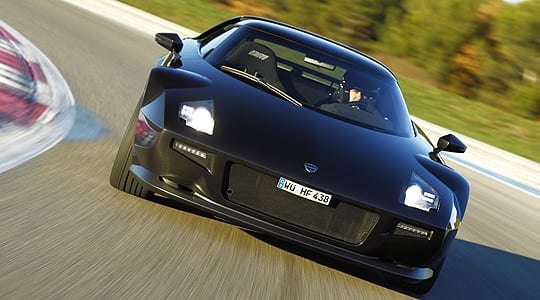
This is a story of obsession. The obsession of two men, for one car. Imagine making a modern recreation of your favourite car, and having it built to such a high standard that it can be compared with the best supercars in the world. That’s what Michael Stoschek has achieved with his remake of the Lancia Stratos, the dramatic mid-engined 1970s rally-winner. This new Stratos has been designed and built by Italian design house Pininfarina as a one-off; it’s based on the Ferrari F430 Scuderia and the sole example, slightly menacing in raw but exquisitely finished carbonfibre black, is waiting to be driven.
Michael Stoschek? He is the chairman of family-owned automotive components maker Brose, a super-keen Stratos enthusiast and a man who has had the resources, not to mention the commitment, to get this car produced. The idea for it came from fellow Stratos enthusiast (and Classic Driver’s ‘design guru’) Chris Hrabalek, who has pursued a 10-year dream to realise this 21st Century Stratos. He provided the inspiration, and has driven this project through with Stoschek.
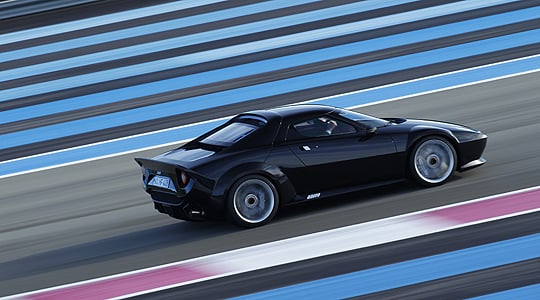
This is not simply a rebodied Scuderia, either. The Ferrari’s chassis has been shortened by 20cm to suit the Stratos’s short wheelbase style, 150kg has been shorn from its weight, power has climbed from 510bhp to 540bhp and the chassis has been retuned to provide more responsive steering and reactive handling. The car’s exterior panels are made from exposed-weave carbonfibre finished to an incredible standard that’s matched by the interior finish. The efforts of Stoschek, Hrabalek, Pininfarina and a small army of unattributable designers, all of them Stratos-admirers working under the radar at other car companies, have so far produced this one car, but if demand develops (and surely it will) more could emerge.
We are to sample the Stratos around part of the Paul Ricard Grand Prix circuit, first being driven, then driving ourselves. Even from the passenger seat, this car is exciting. My driver is Stoschek himself. Six-point harnesses pin us to the carbonfibre seats, we slip on helicopter-style headphones and mics to talk, he pulls the right-hand paddleshift and we’re spat down the track. And it’s clear from the first tight twist that this Stratos is keen with bends, darting at the kerbing with the eagerness of a race car. The body follows instantly, with no roll and no understeer. Stoschek gains speed and on the next lap, anxious to demonstrate his car’s agility, flicks it into the kind of oversteer slide for which the rallying original became famous.
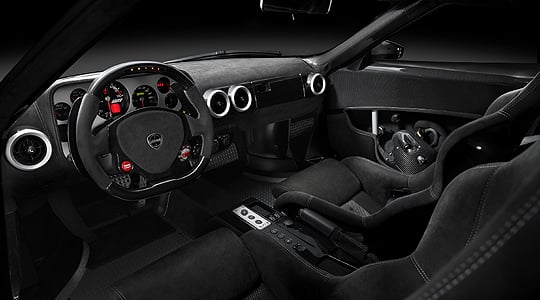
My turn. Getting going is simple enough with those paddleshifts, the steering feeling light but well connected, the view through that dramatically panoramic, visor-like windscreen excellent. This is initially an easy car to drive but then your speed builds, you feel the cornering forces climb and, in tight turns, the heft of that Ferrari V8 begins to work on the rear axle. With more pace, you realise – a lot more pace – those fat back tyres will want to break away. But at lower speeds, the weight distribution helps you dive through corners with arrow precision – enough that you must take care to position the car just so. And that’s just the kind of challenge you want from a driver’s car like this.
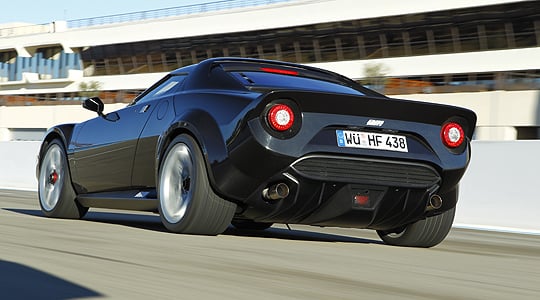
Just as impressive as the lively, interactive handling is the feeling that this car is tough. It might be a one-off, but there’s not a squeak or rattle to be heard, the structure feeling incredibly taut. And it is, the shorter wheelbase, the rollcage and the carbon bodywork increasing the Scuderia’s rigidity by 10 per cent. The result is a car that feels production-ready, no small feat with a project like this. The interior only reinforces this impression. You sit behind an aluminium-faced instrument binnacle that echoes that of the original Stratos, right down to a small bank of rocker switches in its bottom right corner, and it’s set into a dashboard sheathed in immaculately stitched suede. This car might be the development car as well as the sole product – so far – of Stoschek’s dream to produce a 21st Century Stratos, but it certainly doesn’t drive or look like one, having the kind of finish that you’d expect in a car of this calibre.
So is this car destined to be an only car, a toweringly expensive tribute (rumoured to amount to well over £2.5 million) to the 1974 Stratos, or will there be more? Perhaps. There’s talk of 25 cars costing between £420-500,000 depending on demand, and compared with Aston’s admittedly more powerful £1.2 million-plus-taxes One-77 that seems like value – of a sort. But there’s no question that this car deserves to exist as more than a single example – first, because it is a truly excellent car and a near-perfect tribute to the spectacular original, and secondly, because the rest of us will have a (slightly) better chance of seeing one.
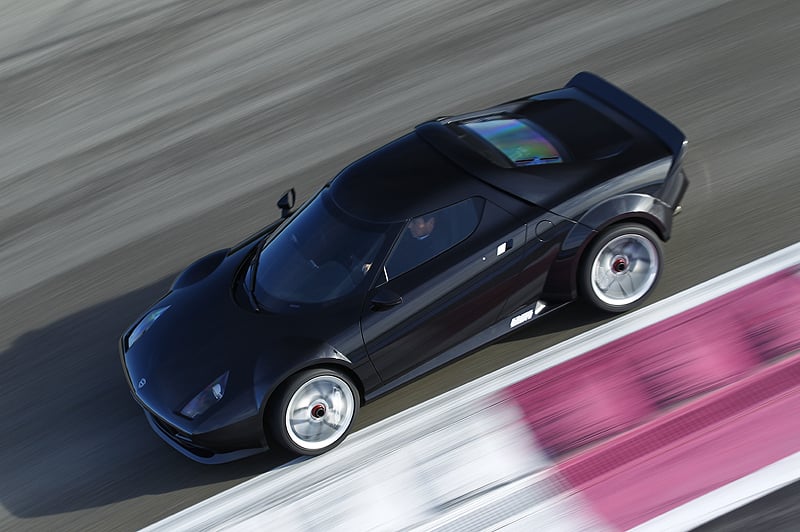
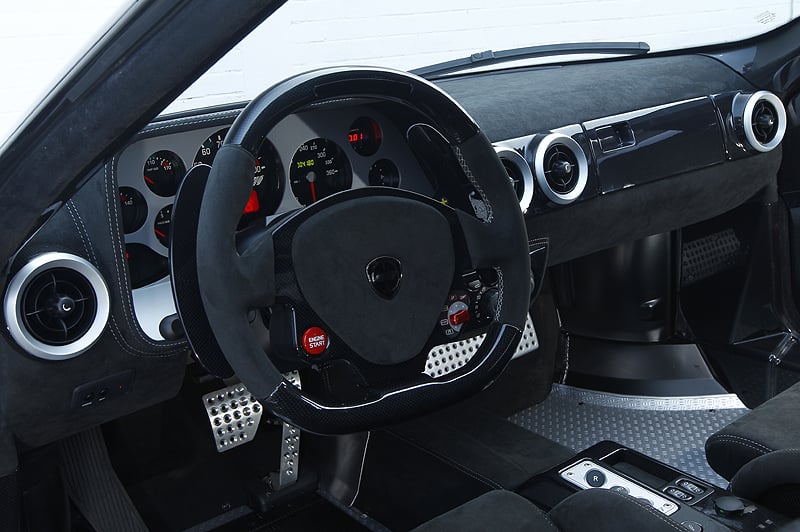
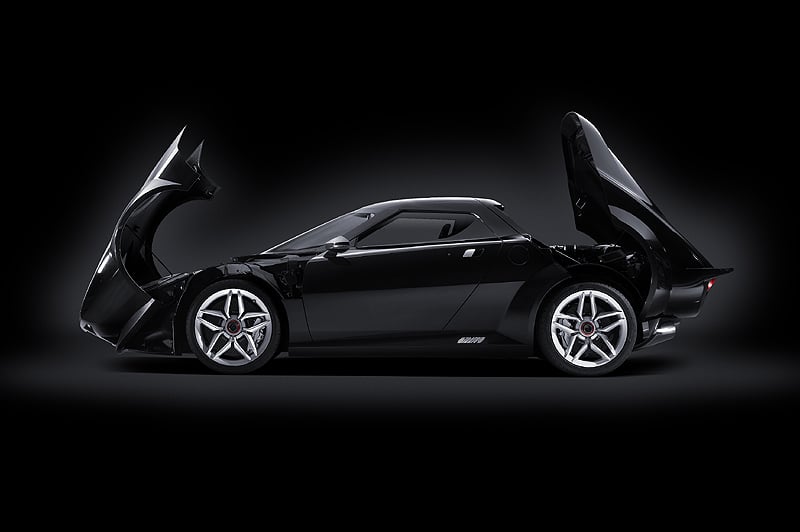
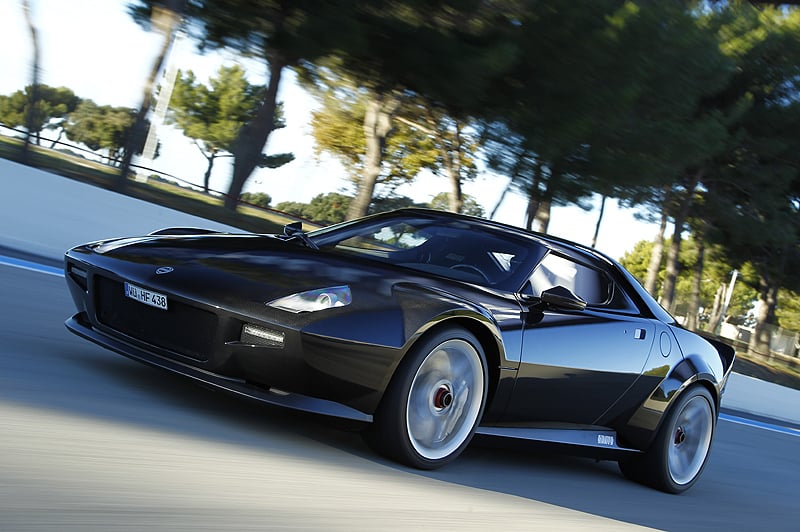
Text: Richard Bremner
Photos: Michael Aust, Rossen Gargolov
ClassicInside - The Classic Driver Newsletter
Free Subscription!








